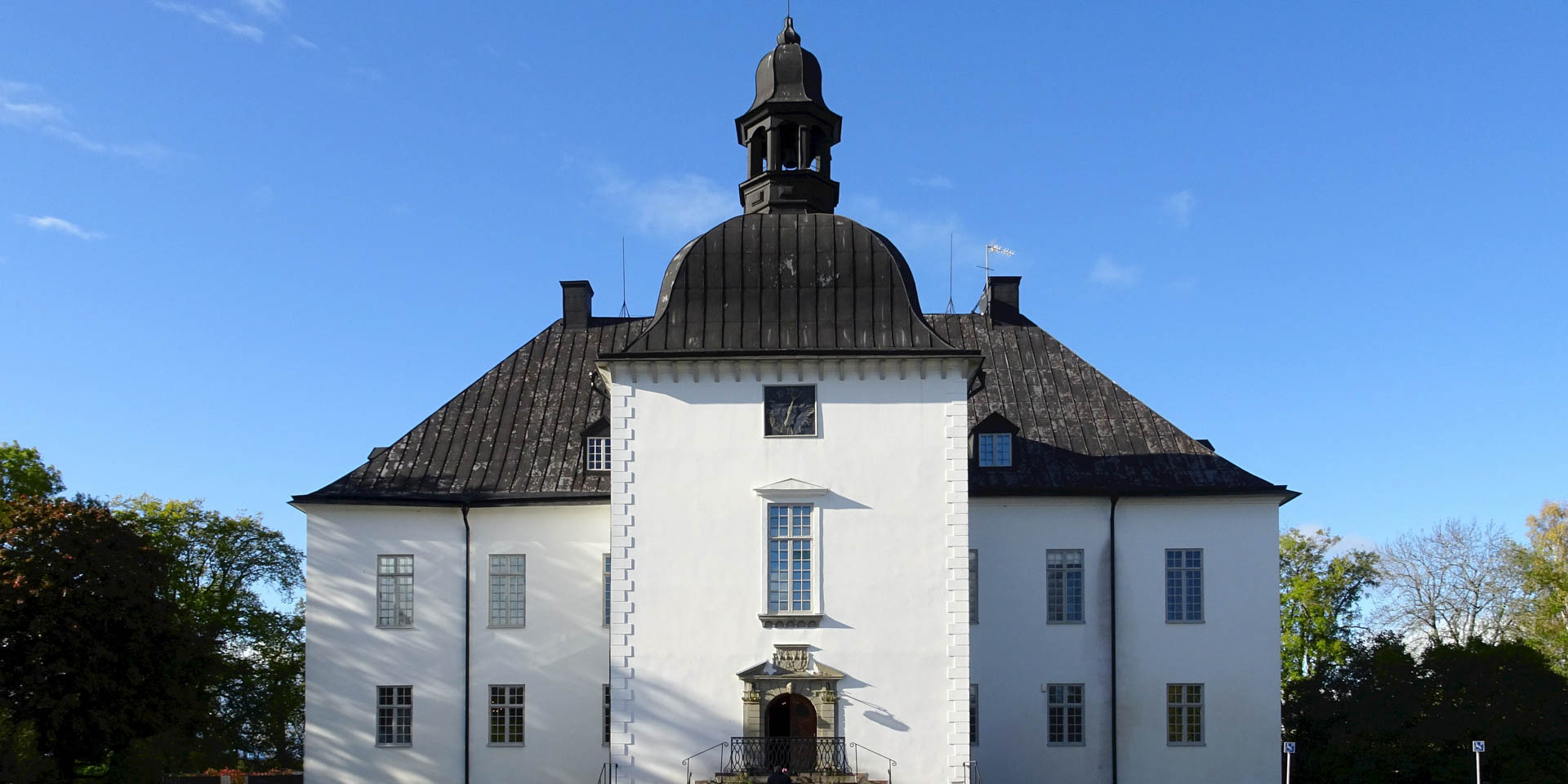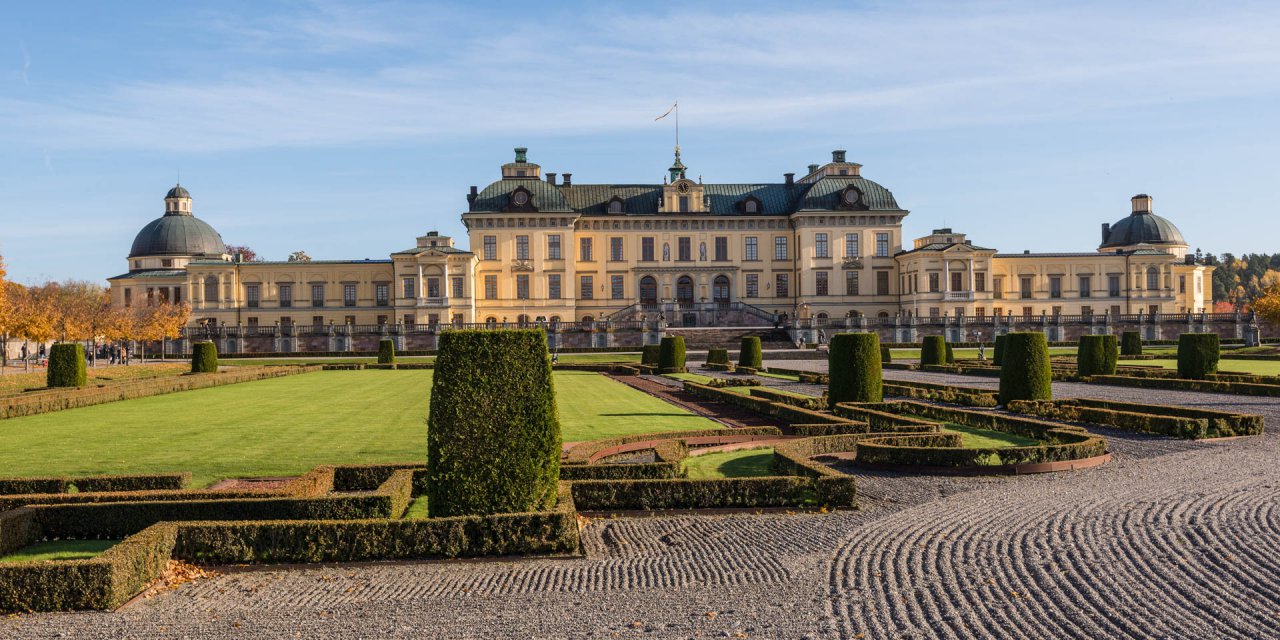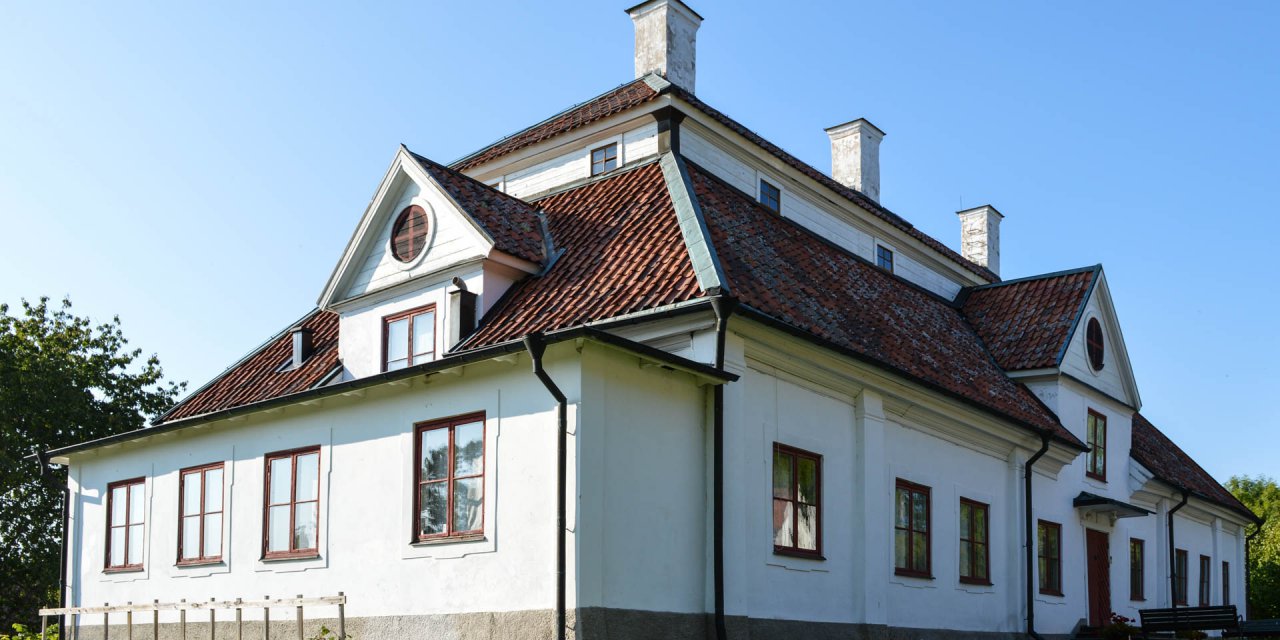

Årsta Slott
Historic manor near Årsta Havsbad
Årsta Slott is a romantic castle-like country estate from the late 17th century at the bay Blistafjärden near Årsta Havsbad, about 11 kilometres south of Handen.
The main building of Årsta Slott was built from 1660 to 1667 and has kept its appearance unchanged from the time of its construction to the present day. The living wing has a floor area of 36 x 16 metres, has two floors and a high steep hipped roof, in which there are two further, partly not furnished floors. The castle courtyard between the castle and the park is flanked by two mirror-image, single-storey side wings built around 1910.
The interior of Årsta Slott
The staircase and entrance portal are located in a massive tower on the side of the castle facing the park. The staircase has a magnificent entrance hall with a vaulted ceiling supported by classical columns and a wide double staircase leading up to the roof floor. Thereby this staircase is the only area inside the castle that has remained more or less unchanged since the 17th century and is now unique among Swedish manor houses.
Otherwise, the present luxurious interior of the palace corresponds to the state after its remodelling between 1910 and 1919 carried out by the then owner of the palace, the very wealthy engineer Gustaf Theodor Cedergren. Cedergren let furnish the castle in different styles.
Since then, the so-called tiled room on the ground floor has had a wall covering of brown glazed tiles with a wide picture frieze of Delft porcelain in the upper quarter of the walls. The typical blue and white frieze was custom-made and shows works of art from the Dutch National Museum in Amsterdam as well as various landscape motifs.
Another particularly beautiful room is the large dining room on the second floor. It has a green marble floor, ceiling-high wall panelling in red polished mahogany and painted wall hangings by the artist Anna Boberg (1864 - 1935). Among them is a large imitation of a gobelin tapestry, also made by Boberg, which used to hang in the dining room of the Rydberg Hotel in Stockholm, which was demolished in 1914.
The Fredrika Bremer Museum at Årsta Castle
Some rooms on the upper floor are dedicated as a museum to the memory of the famous Swedish writer Fredrika Bremer (1801 - 1865), who grew up, lived, worked and died on Årsta Slott. One of the most beautiful rooms in the castle is the Fredrika-Bremer-Salon, which is furnished in the Swedish Empire, the furnishing style from Bremer`s time.
Fredrike Bremer is regarded as a pioneer of realism and was both an early feminist and an animal rights activist. The political debate sparked by her novel Hertha contributed to the fact that the Swedish Parliament in 1858 abolished the until then legal immaturity of unmarried women.
The historical development of Årsta
Årsta Slott is located within an area with a long history. If one moves over the Södra Allén from the castle towards the coast, one reach after approximately 500 metres a cemetery with approximately 100 graves from the Viking age beside the estuary of the small river Husbyån. Not far away from there was the disappeared Viking village of Blista By, which once consisted of two large farms.
About 500 metres north of the castle you can reach the remains of the medieval Årsta estate via Norra Allèn. It was first mentioned in written sources in 1308 and was used as the commandery of the Teutonic Order for its Swedish possessions, which were concentrated in this region. In 1467 the Order of Knights sold its lands in Sweden and the Årsta estate to the then administrator of Sweden Erik Axelsson Tott, who left it to his brother, the knight Laurens Axelsson Tott, in 1468.
Visit Årsta Castle
Årsta Slott has been owned by the municipality of Haninge since 1969 and is open to the public solely during guided tours. The guided tours last 60 minutes and take place regularly in July and August. Outside regular times, guided tours for pre-booked groups are offered all year round.
The interior of the castle is unfortunately not accessible to wheelchair users, as there are no ramps, lifts or adapted toilets.



